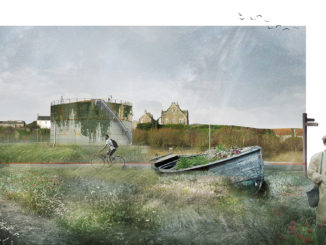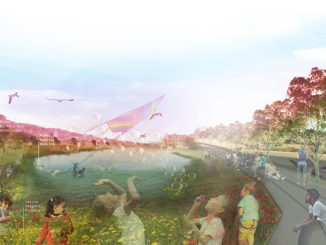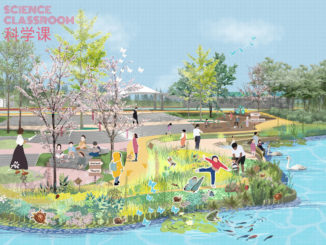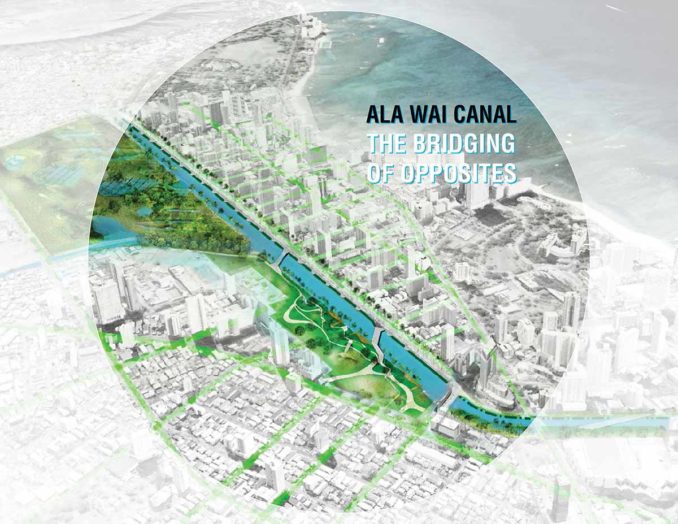
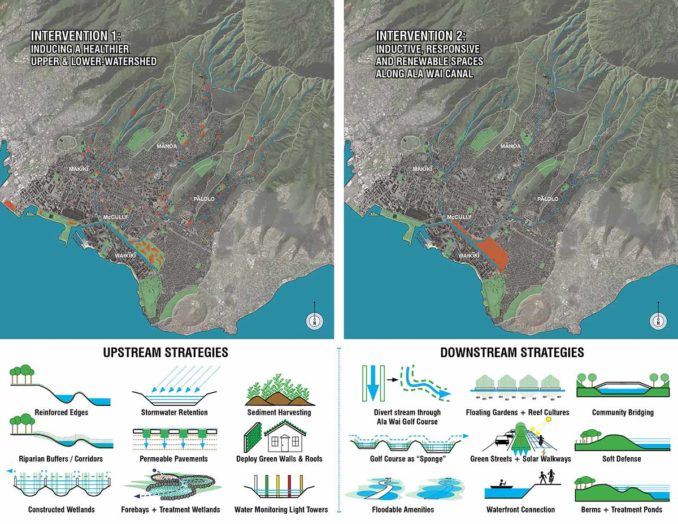
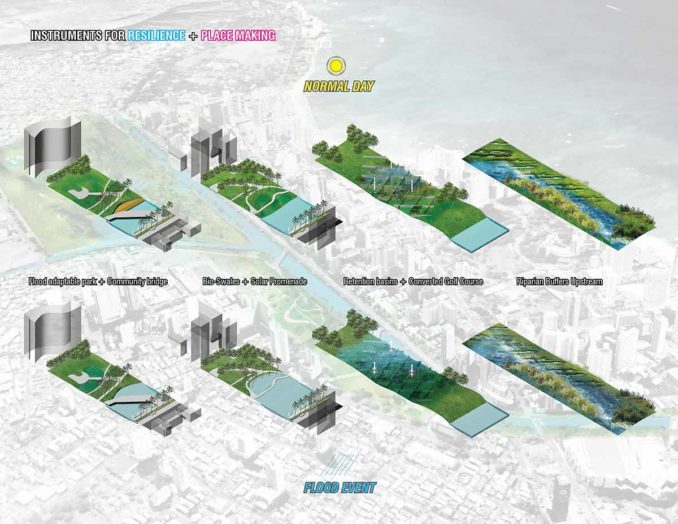
The communities of O‘ahu needs to rethink its reliance on artificial infrastructure. Instead of creating short-sighted preventative measures, this project inspires the communities of O‘ahu to consider the ability of our lands to naturally use water to create healthy and resilient ecosystems—opting for the integrative approach by manipulating our land and water systems to create places that are environmentally rich, responsible and resilient while accomplishing our socio-economic needs.
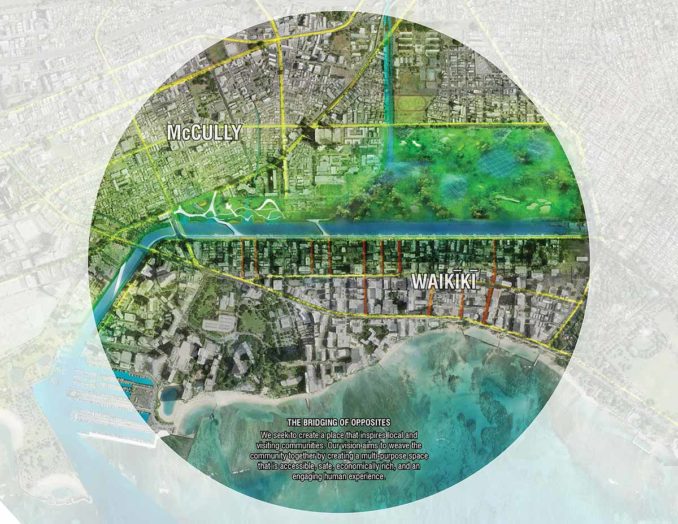
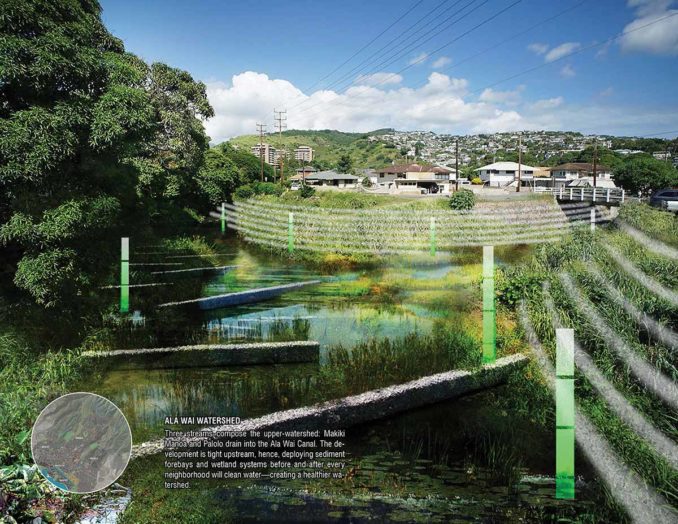
Ala Wai Canal was initially created to divert water from the mountainous watershed to transform what was once a wet, marshy swamp into the destination we know today as Waikīkī—the center of O‘ahu’s economy and tourism—approximately a 30-billion-dollar investment. In the event of a 100-year flood, the canal would overflow and flood all the neighboring communities, threatening the life and well-being of residents and O‘ahu. Furthermore, the water quality in the Ala Wai Canal is notoriously poor, contaminated with bacteria, pathogens from sewage spillage a few years ago.
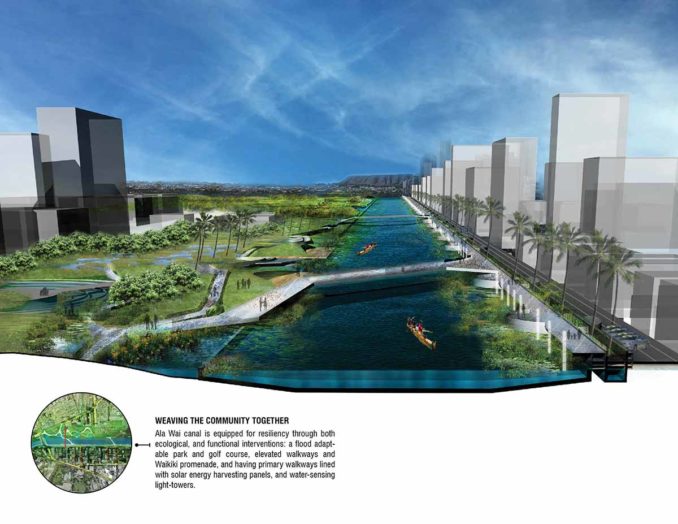
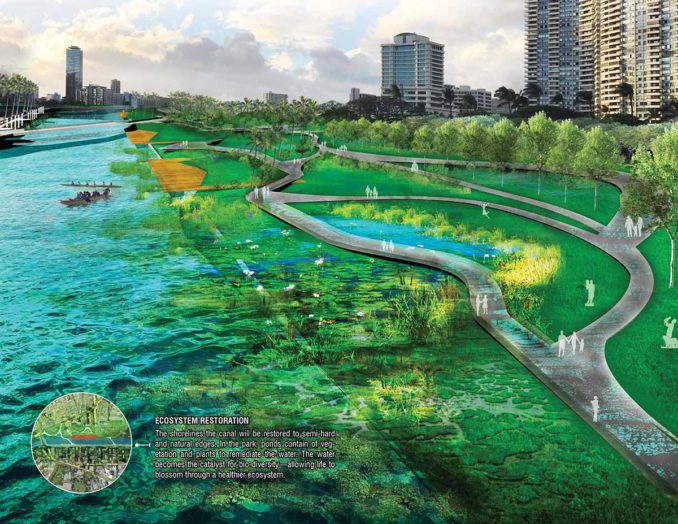
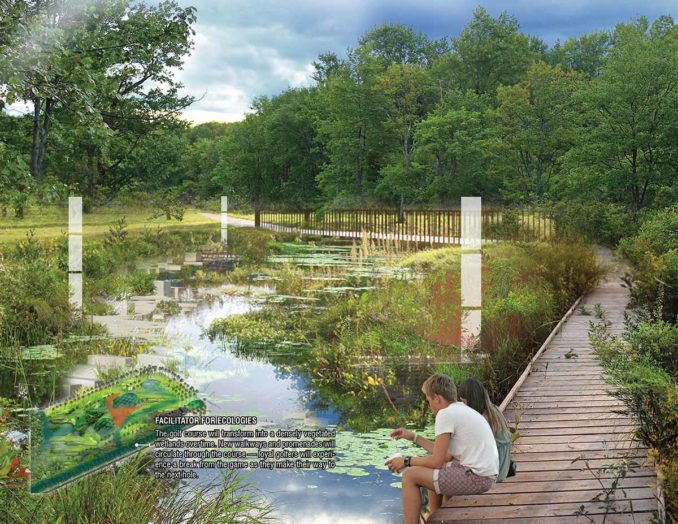
“The Bridging of Opposites,” is a conceptual design proposal focused on the improving waterways that make up the Ala Wai Watershed by remediating water quality and preventing flooding. Water quality would be treated upstream, diverted into the golf course, and flushed through transformed public spaces that serve as “green” treatment sponges that retain water, clean it and then steadily release it. The land-forming technique known as the “cut and fill” was employed to transform an underutilized golf course into a large “sponge,” to withhold a diverted stream, create large wetlands, and protective berms along the edges of the canal. The topography of the landscape is reshaped and formed to guide, retain, and remediate water quality through natural processes.
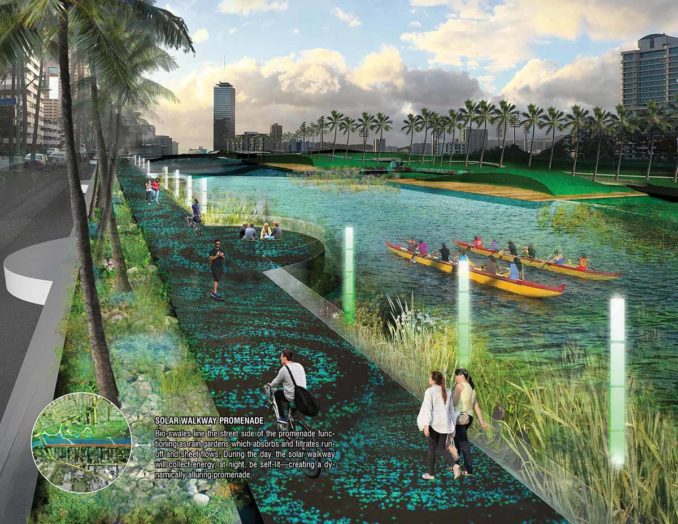
A solar walkway system would transform impervious walkways into self-sustaining catalytic elements within the cityscape—creating a smarter streetscape. Hence, all the main pathways of the Ala Wai Recreational Park and Waikīkī promenade will feature walkable solar panels to collect heat from the rays of the sun, create renewable energy, preserve it to light the walkways at night, and power the eco-light towers in the waterways. During the day, the solar panels will collect energy, at night, they will be self-lit—creating a dynamically alluring promenade. Furthermore, the panels can be programmed to generate different rasterized patterns and colors—lighting up and livening the walkways in an immersive way while increasing both safety and park use at night.
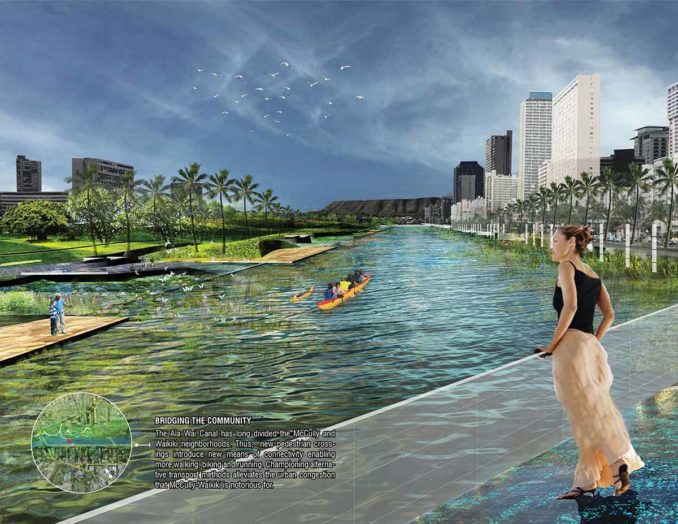
As mentioned above, automated eco-light towers are placed throughout the Ala Wai Watershed to monitor the health of water and flood safeness. The purpose of the light towers is to create a responsive network that can actively relay information to the residents about the status in water quality, water level, and notify people of potential flood evacuation/precautions. Each tower accesses the nitrogen, pH-level, and turbidity levels, and in response, are programmed to light up—flash in specific ways. The normal appearance of the tower is of white light to illuminate the dark areas of the waterways, and foremost, will periodically transition to flashing green to signify good water quality, orange for moderate water quality, and red for bad water quality, and flash red to notify citizens of any drastic activities in the waterway and any noticeable rises in water levels.
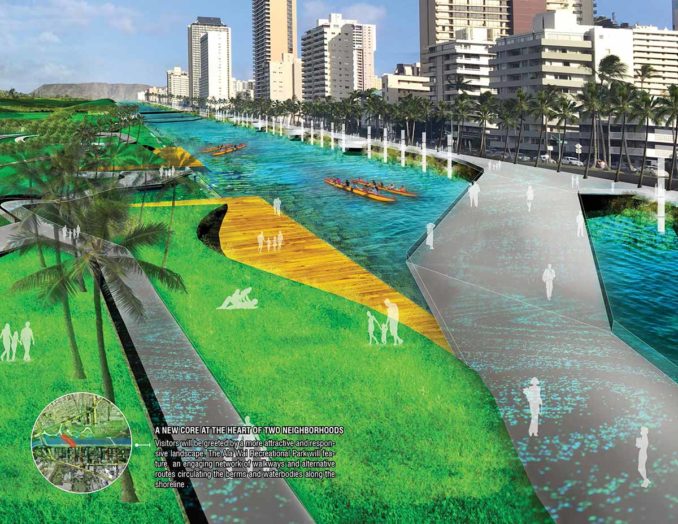
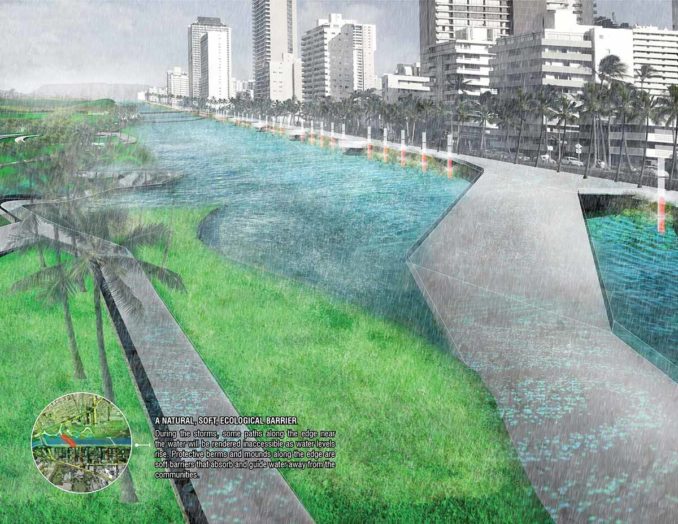
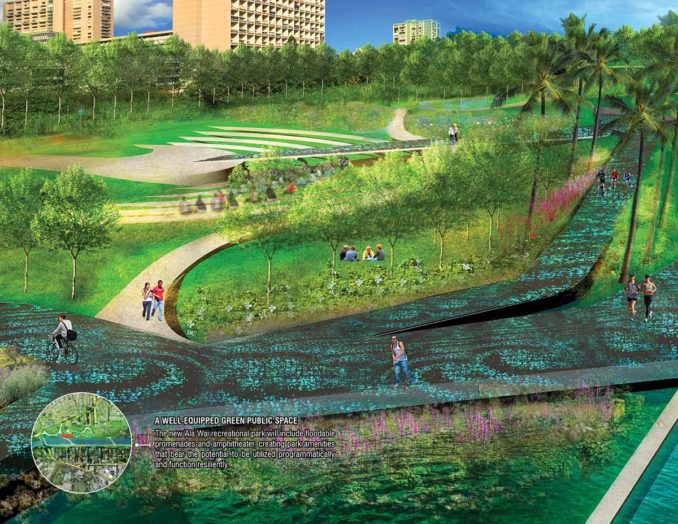
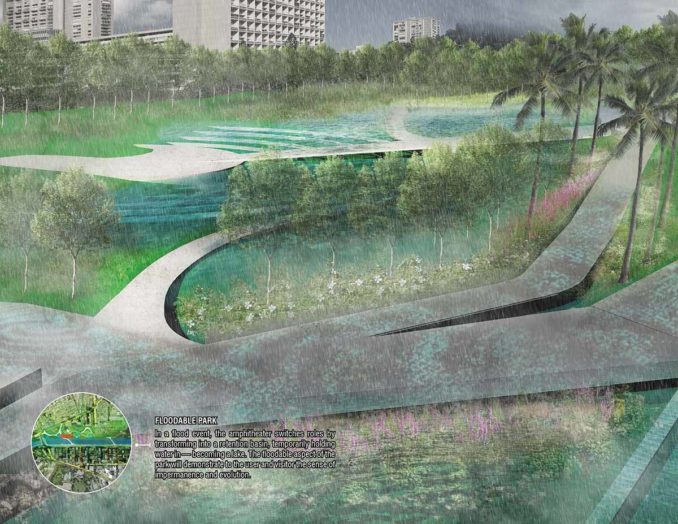
Ultimately, the design seeks to bridge divided communities by bridging our severed relationship with our land and waterways through an ecological rehabilitation. Over time, our relationship with our land and waterways became increasingly detached, we began to perceive these precious elements as opposites—land as something to pave over–water as something to avoid, push aside and bottleneck. Before Ala Wai Canal and Waikiki, our lands were once able to naturally shield settlements, absorb, filtrate and clean water, and irrigate over 100 species of taro. All these qualities were lost once settlements became densely urbanized, leading to tainted soils, polluted waterways, and floods. This vision will not only improve water quality, and control flooding in the canal and nearshore environments, but aims to weave the community together by creating a more engaging human experience through multi-purpose spaces that is safe, accessible, economically rich, and educational.
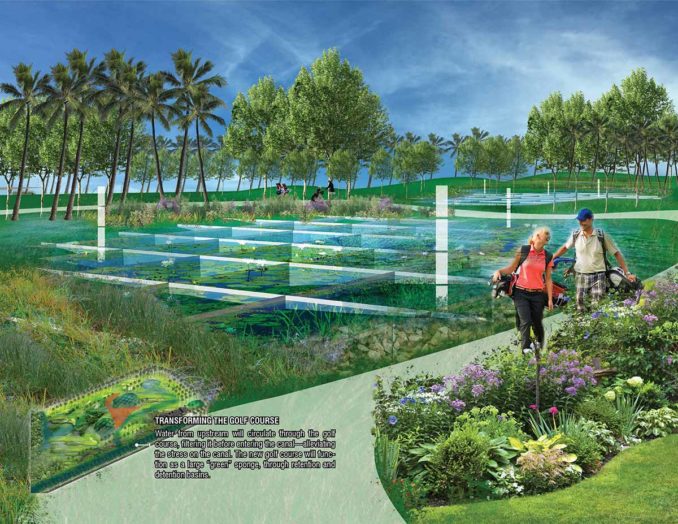
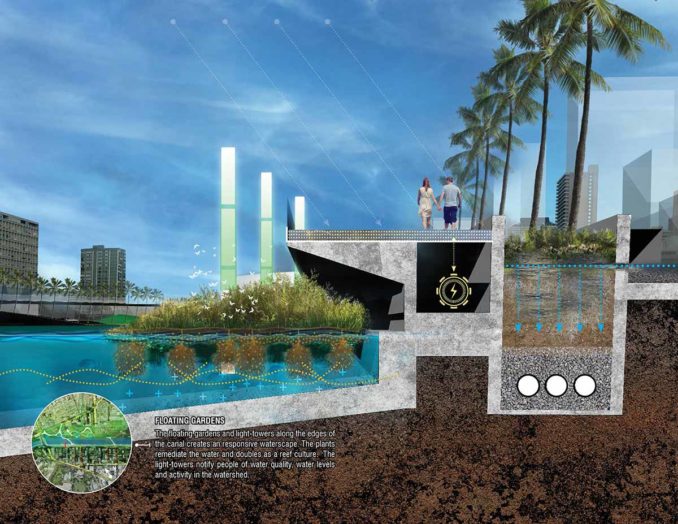
Project Credits (Design, illustrations): Jonathan Quach, Thien Nguyen, Isabella Yu
Location | The Ala Wai Canal in Honolulu, Hawaii, USA

